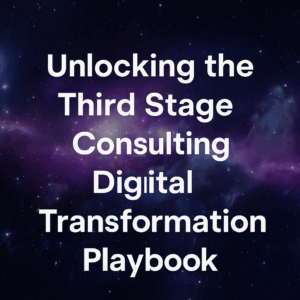With the high volume of investments in Mergers and Acquisitions over the years a lot of organizations now are focusing on how to get more value out of their Merger and Acquisition but how exactly do you get that sort of business value out of the integration of these acquisitions? That’s what we want to discuss in this article today.
A slight majority of our clients are organizations that are either owned by private equity firms or they’re going through some sort of Merger and Acquisition and in recent years we’ve seen an uptick in Merger and Acquisition activity. What organizations tend to struggle with as a result of that Merger and Acquisition activity, is how to realize the business value of those investments. In other words, a parent company or a private equity firm has invested in another firm, they’ve acquired that firm or merged that firm with another. How do we get the business value out of this new enterprise, how do we get the ROI out of it, how do we maximize the efficiency gains that are possible as a result of that? These are some of the questions that a lot of organizations have trouble answering and executing. What we want to do today is talk about what some of the key tactics and strategies are for realizing business value as part of your Merger and Acquisition integration.

Table of Contents
ToggleHave a clear Mergers and Acquisitions integration strategy
The first tip to get the integration value that you expect out of your Merger and Acquisition activity is to have a clear integration strategy. This is something that you ideally do as part of your thesis for why you’re making the acquisition in the first place. In other words, where is the business value, what is the unlocked potential that we want to tap into by acquiring or merging two organizations. This could come from operations, it could come from technology, it could come from organizational changes, it could come from increased revenue and new markets, it could come from just pure scale of the organization. There’s a lot of different levers that can drive that growth or that increase value but the key is that we need to define clearly what that integration strategy is and we need to have that clear strategy going into the acquisition. Certainly when it comes time to create the value and integrate the different organizations, that Merger and Acquisition integration strategy really comes into play. So the first thing you can do is define that integration strategy and have a clear plan for integrating the organizations as part of your Merger and Acquisition integration strategy.
Investment in Proper Technologies
Most organizations are behind in their technology investments, they’ve accumulated a huge amount of technical debt, meaning that they haven’t kept up with technological advances in the marketplace. Many organizations are operating on outdated technologies that are holding them back and preventing them from scaling and growing to their full potential and that quite frankly is why a lot of PE firms and other acquiring organizations are out buying these undervalued businesses. It is because they don’t have the right technology in place, there’s a lot they could be doing with technology to increase business value and so therefore an acquirer comes in with the intent of putting in new technology to either increase revenue and/or decrease cost and increase the overall margins of the organization. One of the things you want to do as part of the value creation of your Merger and Acquisition integration strategy is to now look at your technical strategy of your technical roadmap and your overall digital strategy. What are the priorities for replacing technologies and putting in new technologies and new competencies to drive more revenue, reduce costs and increase our margins and ultimately this all adds up to increased business value, which is what every Merger and Acquisition integration is typically focused on. The key here is to really define a strategy that prioritizes where the most business value is, so if your goals and objectives for the Merger and Acquisition integration strategy is to really ramp up revenue and to maximize your market share, then it might be that a CRM system is a higher priority. If your strategy is to create more common business processes and to really drive operational efficiency across a combined entity, then it might be that a more traditional back-office ERP system or a financial and accounting system is going to be the way to drive that efficiency and that operational consistency. If an organization is having trouble attracting and retaining talent, it may be that HR technology might be the focus but whatever the keys to growth are, just make sure that your technology investments reflect those priorities as well.
Simply implementing technology without impacting the people-side of change is not going to be effective. Implementing new technology alone is not going to achieve and realize the business value that you expect from your Merger and Acquisition integration efforts. It is imperative you look at the organization as a whole and marry the technical implementation plan with the organizational and cultural implementation plan. It is estimated that 80 percent of Mergers and Acquisitions fail during the integration phase, largely because of cultural mismatch, so part of that organizational strategy needs to look at not only how are we organized as a team, how are the roles and responsibilities going to look in this combined entity going forward but also how are we going to combine these cultures, how are we going to bend the cultures of the different organizations that we’re bringing together and ensure that we’re aligned with each other. Additionally, also make sure we are aligned with our goals and objectives as an overall combined organization.
These are just some of the points we want to be aware of. We also want to think about what the change impact is to the organization and make sure that we have an organizational change strategy that allows the people to come together into a combined, uniform and aligned manner that is largely focused on achieving those bigger picture goals and objectives.

Identify Process Improvements
The next thing we need to do is to identify what the process improvements are going to be for the combined entity. It might be that we’re going to consolidate processes, it might be that we’re going to adapt the best practices throughout different parts of the organization in the combined entity, it might be that we’re just going to totally re-engineer the combined entities business. Whatever the case, we need to have a clear vision and execution plan for how we identify and implement those process improvements as part of the overall integration plan. Technology alone for technology’s sake is not going to drive the business value you’re looking for, you need to not only have the technological work stream addressed but also the business process improvement work stream. The organizational change work stream is dependent on making sure you have a clear vision of what you want your business processes to be so that you can roll those changes out to the organization including those people that are impacted by the process improvements now along with the process improvements themselves. Additionally, you also want to make sure that you have clear KPI’s or performance metrics for those processes. If the goal is to increase throughput or reduce cycle time, we want to measure that, we want to measure where we are today and what we expect to return in the future so that we can hold people accountable in realizing the business case that we had going into the Merger and Acquisition. We want to not only improve processes but measure and hold people accountable for achieving those process improvements as well.

Properly Manage Merger and Acquisition Finances
The last thing I’d recommend for an organization going through this Mergers and Acquisitions integration work stream is to make sure that you don’t get caught up in a transformation money pit. Too often organizations go into these projects with unrealistic expectations or aggressive expectations and then they mismanage the implementation and it ends up costing a lot more time and money than ever envisioned. In many cases this can deliver a negative business benefit or a negative ROI and that’s typically the last thing any sort of private equity or finance person wants to hear as it relates to creating value in an organization. Even more so than regular or non Mergers and Acquisitions sorts of organizations, you want to make sure that you have very tight project governance and risk mitigation mechanisms in place to ensure that your transformation doesn’t turn into a big money pit. Make sure that you’re doing the opposite, you want to make sure you’re actually achieving and maximizing business value as a result of the combined entities, not just sinking a bunch of time and money into a technology initiative that isn’t going to deliver business value. So much of this comes back to making sure that we use the business case and the overall hypothesis for what kind of value we want to get out of the combined entity. Using that as a mechanism for driving that project governance and decision making process as part of the transformation. For example, when it comes time to make decisions around investment in a new module or in customizing technology, we need to be able to go back to the business case and say “does it enable the higher business benefits that we expected to see?” If so, then we will invest in additional customization or additional modules of technology but if the answer is no then it might be that we don’t. Without a clear business case and understanding of where the drivers of business value are that’s going to be very difficult, if not impossible, to do so. Make sure you have a business case and a benefits realization plan as a way to drive that business value that you’re looking for as part of your Mergers and Acquisitions integration.These are some of the high priority tips that I would offer up to anyone going through any sort of Merger and Acquisition integration activity.
If you are looking to strategize an upcoming transformation or are looking at selecting an ERP system, we would love to give you some insights. Please contact me for more information eric.kimberling@thirdstage-consulting.com





